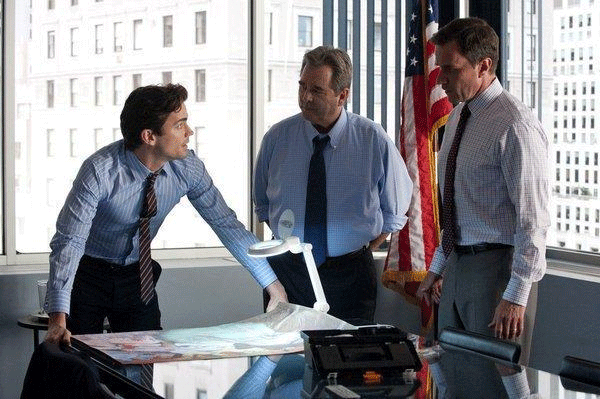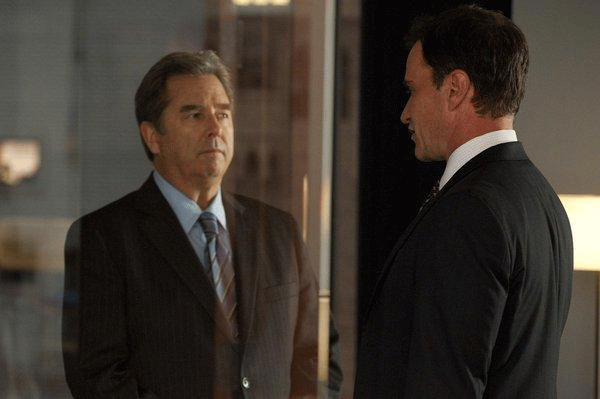The Dark Heroine and the Fair Heroine
It is very easy to let archetypes become stereotypes in storytelling. Sometimes storytellers become so anxious about the possibility of their characters becoming sterotypes (that is, a mere two dimensional, cardboard “type”) that they avoid anything that resembles a standard archetype. Archetypes deal more richly and honestly with the qualities that belong to them — that’s why they are not “stereotypes.”
I went through all that in order to say that although USA Network’s Fairly Legal series began close to the edge of the stereotypes of the Fair and Dark Heroines, the show’s storytellers have managed to avoid the worst elements of the Stereotype Trap.
The principal characters of this series are Kate Reed, a passionate young woman who gave up being an practicing attorney to become a mediator. Her counterpart is her step-mother, Lauren, a competent woman who became a professional partner to Kate’s (now dead) father. It should be noted that whatever Lauren’s age (it has not been made clear), it is evident it is closer to Kate’s than that of the departed Eddie Reed. Where the Fair and Dark aspects play into this lies in the fact that Kate is a tempestuous, passionate brunette and Lauren a cool, collected blonde.
In The Scribbler’s Guide to the Land of Myth, I discuss at length the qualities exemplified by these two character modes. So I won’t go into all the details here (you can find them in the book!). But the key elements we need for this discussion are that the Dark Heroine is usually passionate and chaotic while the Fair Heroine is calm, cool and ordered. Other dichotomies that would go along with this could be night versus day, outside versus inside.
As I said, Fairly Legal plays with these archetypes.

Dark Heroine in Motion and Disorder
Kate is frequently seen on the move. She doesn’t stay put in one spot very often. She perpetually runs late to meetings. She leaves chaos in her wake.
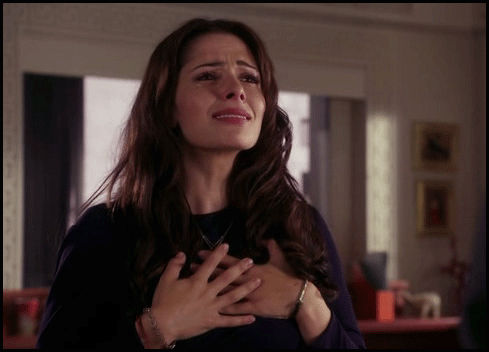
Kate easily becomes passionate about the things she takes an interest in, whether it is a client involved in a mediation or tickets to a performance by a Brazilian singer.
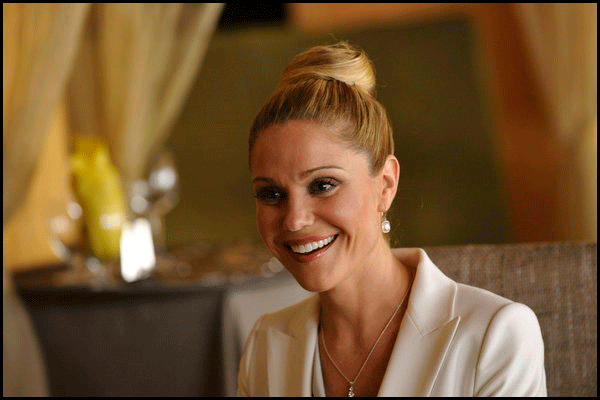
Fair Heroine Holds to Order
Lauren, on the other hand, works hard to keep everything in order. As managing partner of Reed & Reed, she tracks as much of the work in the firm as she can, keeping on top of business. But she’s also subdued her emotions, placing them second to her dedication to keeping her husband’s firm afloat. She definitely comes across as the Ice Queen of the firm.
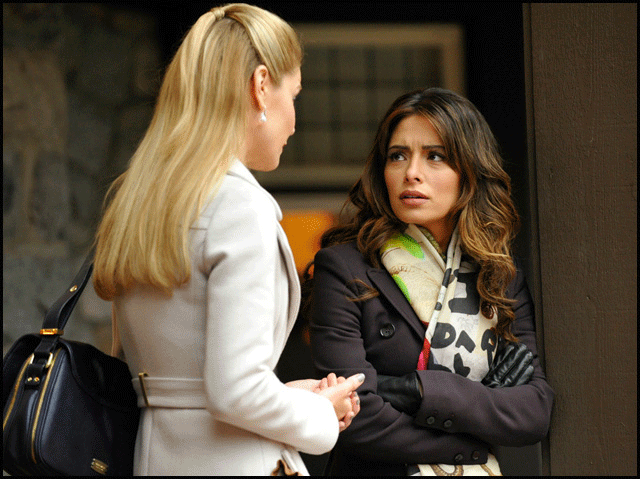
For much of the first season the clash between Kate and Lauren was tinged with the clash of a Passionate Wild Child fighting an Evil Ice Queen. In the pilot (which was laden with Wizard of Oz references), Kate had assigned a ringtone to Lauren of the Wicked Witch of the West theme from The Wizard of Oz). That kind of opposition can work very effectively in a one shot. But for an ongoing series, unless they were going to commit to open warfare between the women, this clash needed to be adjusted.
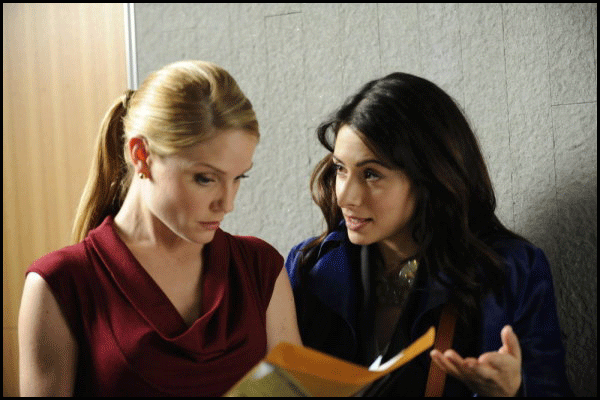
With Season 2, the storytellers have yoked Kate and Lauren together as partners in the firm, obliging them to find ways to work together. It is enough conflict in Kate’s tempestuous manner bouncing off Lauren’s sleek exterior. Additionally, Lauren’s prefrence to stick “by the book” to the rules of law and society gets bent by the heat of Kate’s passions. They make excellent foils for each other.
It should be noted that Kate is the main character in the series, so it is her goals which end up driving the main story lines in episodes.
More Elements of Kate As Dark Heroine
There are, however, additional things to demonstrate the Dark Heroine elements in Kate’s character. There are the men in her life.
Kate’s assistant Leo provides a small amount of balance to Kate’s trajectory. But, notably, he does not attempt to change her too much.
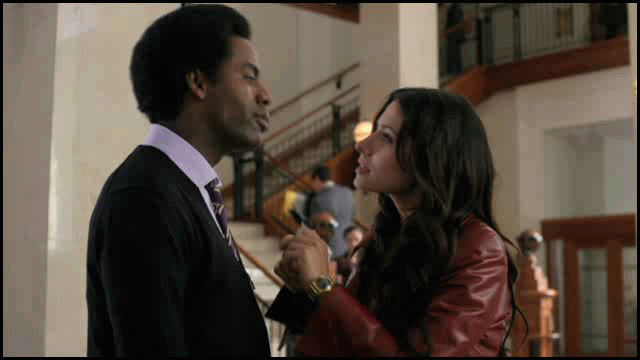
Kate’s ex-husband, Justin, however, is a different matter.
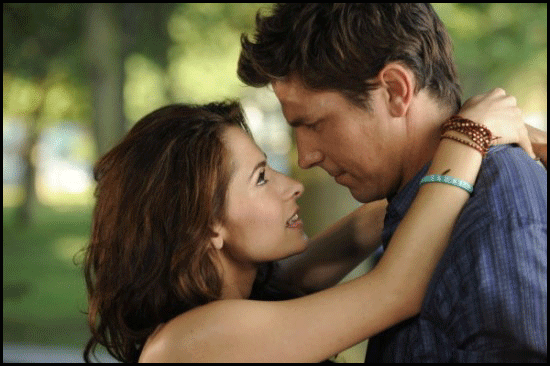
Kate cannot quite let go of her relationship with Justin. He, as an Assistant District Attorney, represents order and stability – much the way Lauren does. But Justin cannot escape the fascination that the mercurical Kate creates for him. She stretches his boundaries, drags him beyond the limits he considers safe. But she leaves a lot of turmoil behind her, making him work harder at keeping his own life orderly.
With Season 2, a new man has entered the picture. Ben Grogan rescued the firm by buying into it as a full partner. He may be a practicing lawyer but his methods verge on Kate-level of chaos. Kate is now obliged to deal with someone who does not give her a clear, ordered surface to bounce off.
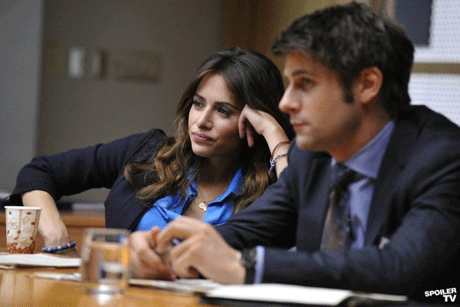
How does a chaos element (the Dark Heroine) deal with another chaos element? The boundaries are down. Order is not on the agenda. Emotion is definitely in play, for Ben has not made a secret of his attraction to Kate. He has even openly challenged her on her inability to really choose between Justin and himself. Chaos gives chaos plenty of problems.
Playing With the Archetypes
The point of all this is that Fairly Legal lets the archetypes play more fully, exploring all aspects of their natures. Just how controlled is Lauren? And just how much attraction does order and stability have for Kate? What happens when Lauren’s emotions get overturned or Kate has to play by the rules or lose everything?
These are the types of conflicts a storyteller can generate when he lets the archetypes really run true to their forms, rather than limit them to the obvious and thus end up as brightly colored cardboard. If you are going to use such motifs, pull out all the stops. You could end up with a character that’s as engagingly vivid as Fairly Legal‘s Kate Reed.


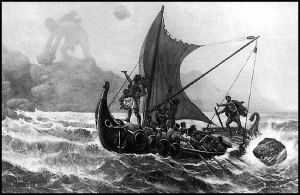 The prototype for quest stories is The Odyssey. It hits all the major points of the Hero’s Journey: meeting the mentor (actually, the origin for that title is a character in the story), approaching the inmost cave, losing everything. If we consider The Odyssey in a typical genre way, we would probably call it an Adventure story. (You might call it an Epic – but that actually refers to the literary form the story was first captured in, a long narrative poem of a legend.)
The prototype for quest stories is The Odyssey. It hits all the major points of the Hero’s Journey: meeting the mentor (actually, the origin for that title is a character in the story), approaching the inmost cave, losing everything. If we consider The Odyssey in a typical genre way, we would probably call it an Adventure story. (You might call it an Epic – but that actually refers to the literary form the story was first captured in, a long narrative poem of a legend.)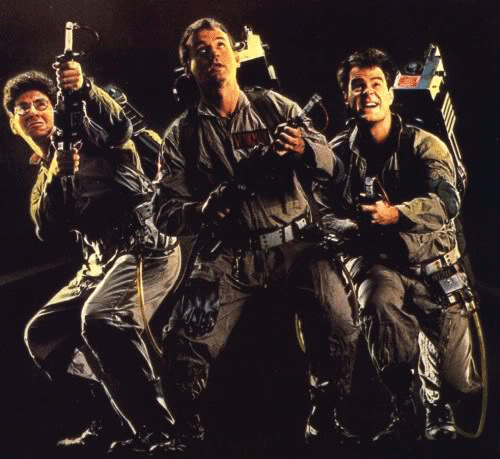 Ghostbusters is a comedy riddled with elements of the Hero’s Journey, particularly if you use elements from Campbell’s outline. For instance, in Campbell’s outline, we find “Meeting the Goddess.” Depending on how you want to interpret the motif, it could either be when Peter meets Dana or when Dana becomes possessed. The “Belly of the Whale” or “Approach to Inmost Cave” element happens to involve the supernatural dimension.
Ghostbusters is a comedy riddled with elements of the Hero’s Journey, particularly if you use elements from Campbell’s outline. For instance, in Campbell’s outline, we find “Meeting the Goddess.” Depending on how you want to interpret the motif, it could either be when Peter meets Dana or when Dana becomes possessed. The “Belly of the Whale” or “Approach to Inmost Cave” element happens to involve the supernatural dimension.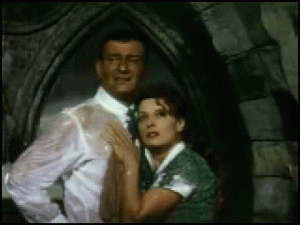 What about Romance? Would we see aspects of the Hero’s Journey in such? Consider The Quiet Man.
What about Romance? Would we see aspects of the Hero’s Journey in such? Consider The Quiet Man.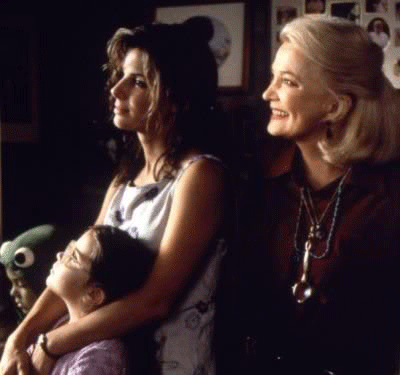
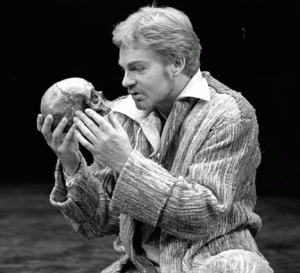 And Hamlet, though it exhibits many of the elements of Campbell’s Hero’s Journey, never goes anywhere (well, other than Hamlet’s brief excursion at sea). The Prince meets a “Supernatural Aid” in the Ghost. We could consider his encounters with Ophelia as the “Woman as Temptress” moment, given that he realizes his love for her could distract him from his mission of uncovering the details of his father’s murder. He comes to better terms with the Ghost (“Atonement with the Father”), and on his return to the court is feted with a supposed friendly fencing match with Laertes (“Apotheosis”). Although there may be plot events that coincide with the Hero’s Journey beats, the thematic stages are more important in the play.
And Hamlet, though it exhibits many of the elements of Campbell’s Hero’s Journey, never goes anywhere (well, other than Hamlet’s brief excursion at sea). The Prince meets a “Supernatural Aid” in the Ghost. We could consider his encounters with Ophelia as the “Woman as Temptress” moment, given that he realizes his love for her could distract him from his mission of uncovering the details of his father’s murder. He comes to better terms with the Ghost (“Atonement with the Father”), and on his return to the court is feted with a supposed friendly fencing match with Laertes (“Apotheosis”). Although there may be plot events that coincide with the Hero’s Journey beats, the thematic stages are more important in the play.
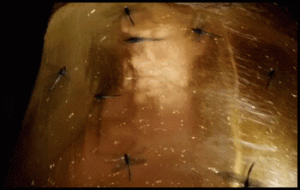 Emmet, however, having spent the last six months skirting the edges of death (he may even have crossed the border, but we don’t know for sure), realizes that the reanimated Lincoln is actually possessed by a hostile spirit. Lincoln’s own spirit may be present, but they have to get rid of the invader to be sure.
Emmet, however, having spent the last six months skirting the edges of death (he may even have crossed the border, but we don’t know for sure), realizes that the reanimated Lincoln is actually possessed by a hostile spirit. Lincoln’s own spirit may be present, but they have to get rid of the invader to be sure. The return of Jonas is a bit more complicated, though. Yet even so, in the last episode we discover that his character has not really changed in spite of experiencing death. And most importantly, once the resurrected Lincoln is freed of the hostile possessing spirit, we find … he’s pretty much just the same as he always was.
The return of Jonas is a bit more complicated, though. Yet even so, in the last episode we discover that his character has not really changed in spite of experiencing death. And most importantly, once the resurrected Lincoln is freed of the hostile possessing spirit, we find … he’s pretty much just the same as he always was.